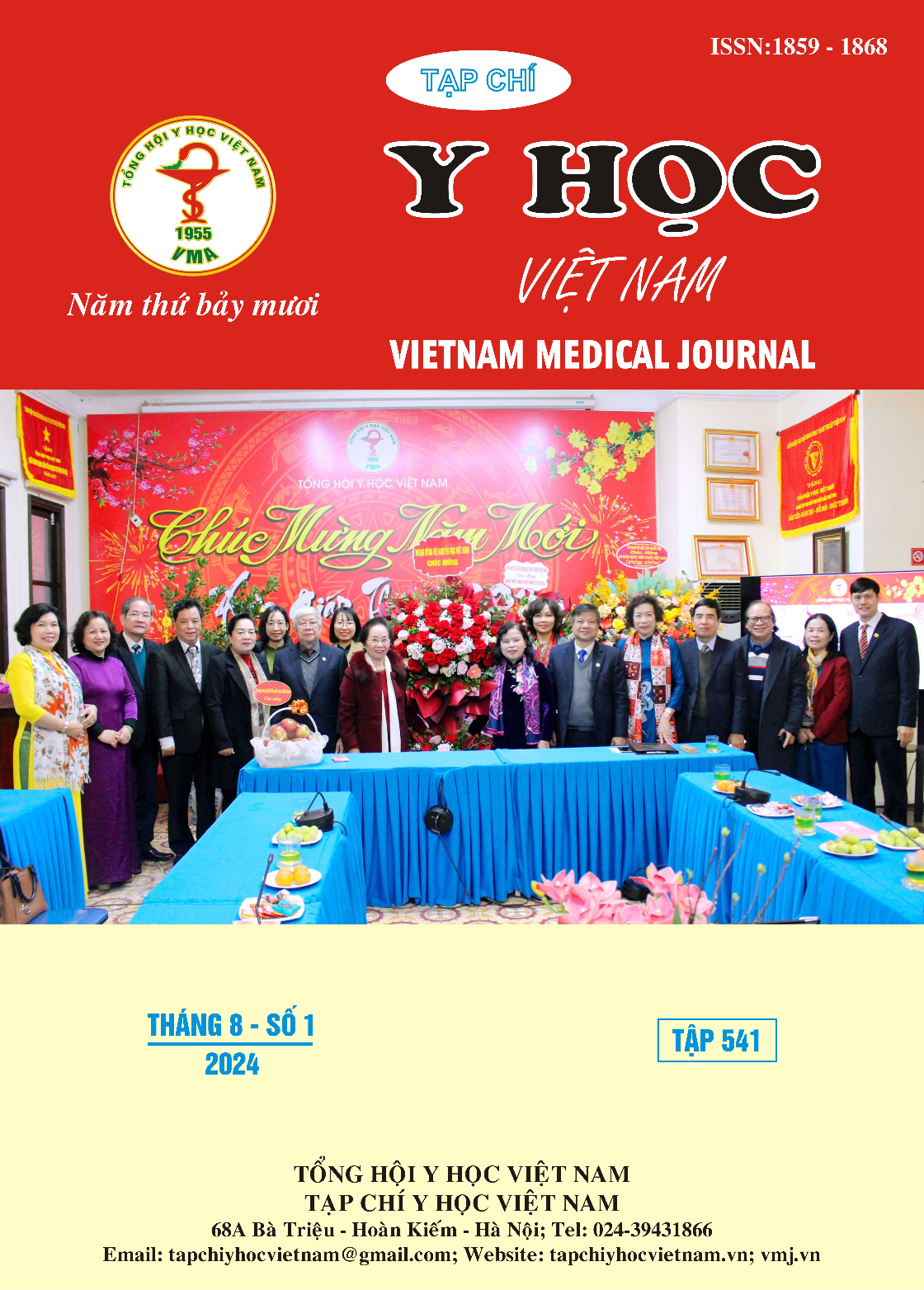EVALUATION OF THE RESULTS OF LOW INTENSITY CONSTRAINT INDUCED MOVEMENT THERAPY ON THE LOWER LIMB TO RECOVERY UPPER EXTREMITY FUNCTION IN PEOPLE WITH ACUTE CEREBRAL ICHATA ADMITTED TO PHU THO PROVINCIAL GENERAL HOSPITAL IN 2023
Main Article Content
Abstract
Objective: Evaluating the results of low intensity constraint induced movement therapy (CIMT) on the paralyzed side in upper limb rehabilitation in patients with acute cerebral infarction at the Stroke Center of Phu Tho Provincial General Hospital from January to August, 2023. Materials and methods: Prospective study, with intervention, comparing before and after treatment, 52 patients with acute ischemic stroke treated as inpatients at the Stroke Center of Phu Tho Provincial General Hospital from January 2023 to August 2023. Result: The average age was 69.46 ± 10.28 years old. The ratio of men and women is 1.48/1. The average time from onset to intervention with low-intensity CIMT on the paralyzed side was 4.69 ± 3.11 days. Cerebral infarction of the anterior cerebral circulatory system, accounting for 71.15%. The rate of moderate stroke (NIHSS 8-15) is 75%. The average score for assessing upper limb motor function using the motor activity diary (MAL) before and after intervention is: frequency of use (AOU) is 1.28 ± 0.27 and 2, respectively. 67 ± 0.56; quality of movement execution (QOM) was 1.39 ± 0.30 and 2.85 ± 0.52. The average upper limb motor function assessment score (ARAT) before and after intervention was 23.63 ± 8.46 and 43.50 ± 8.52. The average Barthel score before and after intervention was 30.67 ± 8.46 and 77.98 ± 12.53. Conclusion: Patients with acute ischemic stroke undergoing low-intensity CIMT intervention in our study are older, most have moderate stroke and damage to the anterior cerebral circulatory system. The rate of improvement in upper limb function increases in the latter group intervention compared to the pre-intervention group.
Article Details
Keywords
vận động cưỡng bức bên liệt cường độ thấp, phục hồi chức năng chi trên.
References
2. Nguyễn Văn Hùng. Bước đầu nghiên cứu phục hồi chức năng chi trên ở bệnh nhân nhồi máu não giai đoạn cấp bằng phương pháp CIMT. Hà Nội, Đại học Y Hà Nội; 2013.
3. Nguyễn Thùy Trang, Lương Tuấn Khanh. Đánh giá kết quả phối hợp can thiệp gương trị liệu và vận động cưỡng bức bên liệt cường độ thấp trong phục hồi chức năng chi trên ở người bệnh nhồi máu não giai đoạn cấp, Luận văn Thạc sỹ Y học 2021.
4. Lee MM, Cho H-y, Song CH. The mirror therapy program enhances upper-limb motor recovery and motor function in acute stroke patients. American journal of physical medicine & rehabilitation. 2012;91(8):689-700.
5. Bùi Thị Hoài Thu. Đánh giá kết quả phục hồi chức năng chi trên kết hợp kích thích điện một chiều xuyên sọ ở bệnh nhân nhồi máu não, Luận văn Thạc sỹ Y học. Hà Nội, Đại học Y Hà Nội; 2020.
6. Alexander WD, Dorothy FE, Michele H. Does the Application of Constraint-Induced Movement Therapy During Acute Rehabilitation Reduce Arm Impairment After Ischemic Stroke? Stroke. 2000;31: 2984 - 2988.
7. Simpson LA, Eng JJ. Functional recovery following stroke: capturing changes in upper-extremity function. Neurorehabilitation and neural repair. 2013;27(3):240-250.
8. Wolf SL, Winstein CJ, Miller JP, et al. Retention of upper limb function in stroke survivors who have received constraint-induced movement therapy: the EXCITE randomised trial. The Lancet Neurology. 2008;7(1):33-40.
9. Dromerick AW, Edwards DF, Hahn M. Does the application of constraint-induced movement therapy during acute rehabilitation reduce arm impairment after ischemic stroke? Stroke. 2000;31(12):2984-2988.
10. Ju Y, Yoon I-J. The effects of modified constraint-induced movement therapy and mirror therapy on upper extremity function and its influence on activities of daily living. Journal of physical therapy science. 2018;30(1):77-81.


